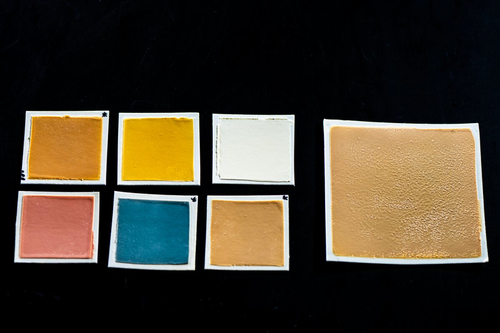THURSDAY, OCTOBER 19, 2023
Using a synthesized version of cephalopod dye, researchers at Northeastern University have reportedly created paint that can change colors when exposed to light.
Scientists from the university’s Kostas Research Institute wanted to look at ways components from these creates could be replicated and used in the real world, with one possibility including a sustainable coating.
About the Research
Cephalopods, like octopi or squid, can change colors in response to threats or changes in light because of xanthommatin, a naturally occurring dye in their bodies. Cassandra Martin, a research scientist at the institute, said that these creatures were a starting point due to the unique nature of their skin.
“Their color change is so rapid and it’s so vibrant and it’s so intense,” Martin said. “There’s not a lot of natural systems out there that change that fast and there’s not a lot of color-changing materials that are that fast without requiring a lot of external (changes).”
Dan Wilson, senior research scientist, said the team also wanted to try to find a way to make a material where this change could be reversed to return the material back to its original color.

 |
| Photos: Alyssa Stone / Northeastern University |
|
Using a synthesized version of cephalopod dye, researchers at Northeastern University have reportedly created paint that can change colors when exposed to light. |
As part of the project, an intern and visiting student began work using the colorant last summer. Katilyn Flynn and the team reportedly found that titanium dioxide served as a conductor for the color change, and, by utilizing different amounts of xanthommatin, could speed up the change or add to the intensity of the color shift.
“We’ve imagined a scenario where if you want to have art that changes from day to day on an interior wall, like maybe in a coffee shop or something you could use a regular projector to project a pattern onto the wall, temporarily paint in this color and this pattern or this art, and then over time that fades away and you can redo it again, ideally as many times as you want,” Wilson said.
“We can create temporary artwork or art or paint that could potentially track the weather or track the environment that it’s in.”
According to the report, the paint can change in as quickly as five minutes and can last as long as 24 hours, depending on how long the paint is exposed to light. The colorant can also be made in as little as two hours and added to water or oil-based paints.
 |
|
According to the report, the paint can change in as quickly as five minutes and can last as long as 24 hours, depending on how long the paint is exposed to light. |
“Paints that are like commercially used nowadays can have harmful chemicals in them, so they can have things that can be harmful to the people that are painting them,” said Flynn.
“The fumes can be super harmful. They can be harmful long term if you’re exposed to them for a long time. They can also leach out into the environment. Searching for a more natural way to make these paints creates a safer environment for the people using it and for the people that are going to be exposed to it.”
Flynn and Martin told Northeastern Global News that, moving forward, they hope they can apply this system to other materials and expand beyond the yellow-red color palette they used in the initial experiment.
Additionally, they hope to get to the point where the user can decide how quickly they want the colors to change on the paint.
The research was recently published in the journal Advanced Science.
Recent Nature-Inspired Coating
Last month, a research team also reportedly developed a new energy-efficient coating that mimics the qualities of a desert chameleon to keep buildings cool in the summer and warm in the winter.
Fuqiang Wang and colleagues were inspired by the Namanqua chameleon, which changes its color to regulate its body temperature in southwestern Africa. In hot conditions, the animal turns light grey to reflect the sunlight; on the other hand, a dark brown color is adapted to absorb heat in cooler temps.
According to a release from the American Chemical Society, Wang’s team wanted to develop a color-shifting coating that mimics these qualities, switching between “modes” to create more energy-efficient buildings.
Researchers reportedly mixed thermochromic microcapsules, specialized microparticles and binders to form a suspension and make the coating. Then, they sprayed or brushed it onto a metal surface.
When heated to 68 degrees Fahrenheit, the surface began to change from dark to light grey. Increased to 86 F, the light-colored film also reflected up to 93% of solar radiation. The team explained that even when heated above 175 F for an entire day, the material showed no signs of damage.
Testing reportedly found that:
The researchers explain that this system could save “a considerable amount of energy for regions that experience multiple seasons, while still being inexpensive and easy to manufacture.”
Tagged categories: Bio-based materials; Biomimicry; Coating Materials - Commercial; Coatings technology; Coatings Technology; Colleges and Universities; Color; Paint; Pigments; Program/Project Management; Research and development; Titanium dioxide